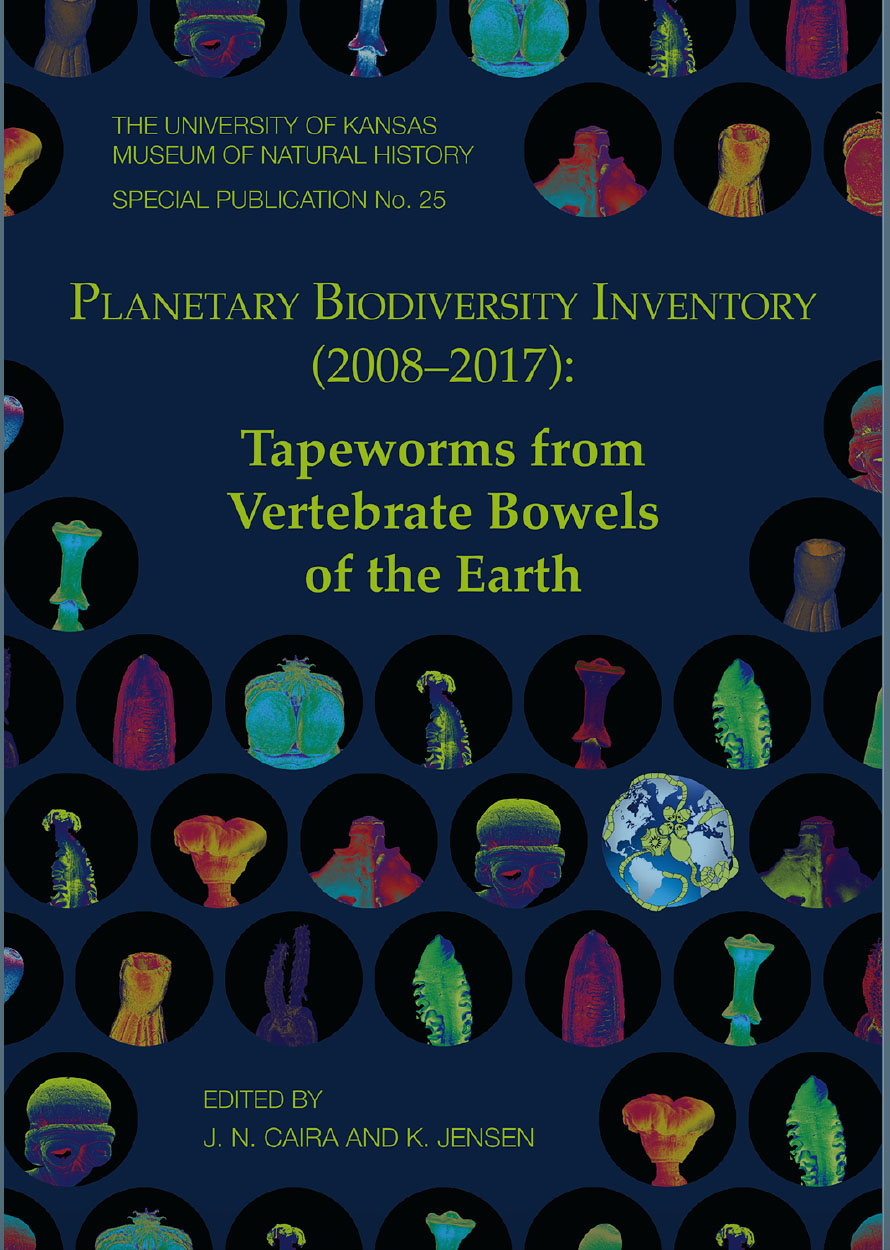 Drs. Janine Caira and Kirsten Jensen edited a special volume of the University of Kansas, Museum of Natural History publication entitled “Tapeworms from the vertebrate bowels of the earth” presenting the outcome of their NSF funded Planetary Biodiversity Inventory project. This publication is open source (available through the above link).
Drs. Janine Caira and Kirsten Jensen edited a special volume of the University of Kansas, Museum of Natural History publication entitled “Tapeworms from the vertebrate bowels of the earth” presenting the outcome of their NSF funded Planetary Biodiversity Inventory project. This publication is open source (available through the above link).
The preface reads: This document is organized into 22 peer-reviewed chapters. Each of the chapters focuses on an individual cestode group, begins with the status of knowledge of the group prior to the inception of the PBI project, and ends with an assessment of the current understanding of the group. In each case, diversity, classification, morphology, phylogenetic relationships, host associations, and geographic distribution are addressed. In all but one case, each chapter includes a list of valid taxa. Synonyms have not generally been listed; this was determined to be beyond the scope of the project given the immensity of such lists for some groups. With over 3,000 valid species, the generation of a list of species for the Cyclophyllidea was also determined to be beyond the scope of this project. However, a list of valid higher taxa is provided. Each of the 19 cestode orders is addressed alphabetically in separate chapters with two exceptions. The Mesocestoididae are treated as a family in the Cyclophyllidea. Although evidence supporting recognition of the former as an independent order is mounting, the case remains to be formally made based on more detailed investigations of this enigmatic group of mammal parasites. The Onchoproteocephalidea are the second exception. So as to emphasize the dual nature of the host associations and scolex morphology of its members, the freshwater fish-parasitizing taxa (formerly assigned to the order Proteocephalidea) are treated in a chapter as the Onchoproteocephalidea I separately from the taxa that parasitize elasmobranchs, which are treated as the Onchoproteocephalidea II. Use of quotation marks around taxon names (e.g., the order “Tetraphyllidea”) is to remind readers of the definitively non-monophyletic nature of these groups. The first and last chapters are more synthetic in nature. The first chapter provides an overview of the results of the project both in terms of its Intellectual Merit and Broader Impact elements (to use NSF terminology). The final chapter provides a molecular framework for the phylogenetic relationships among the cestodes as they are understood at the end of the PBI project. The final chapter also describes the molecular methods and taxon sampling employed to achieve that framework. This Special Issue concludes with an Appendix listing the more than 220 publications directly resulting from project efforts, all of which cite the PBI award (NSF DEB Nos. 0818696 and 0818823).